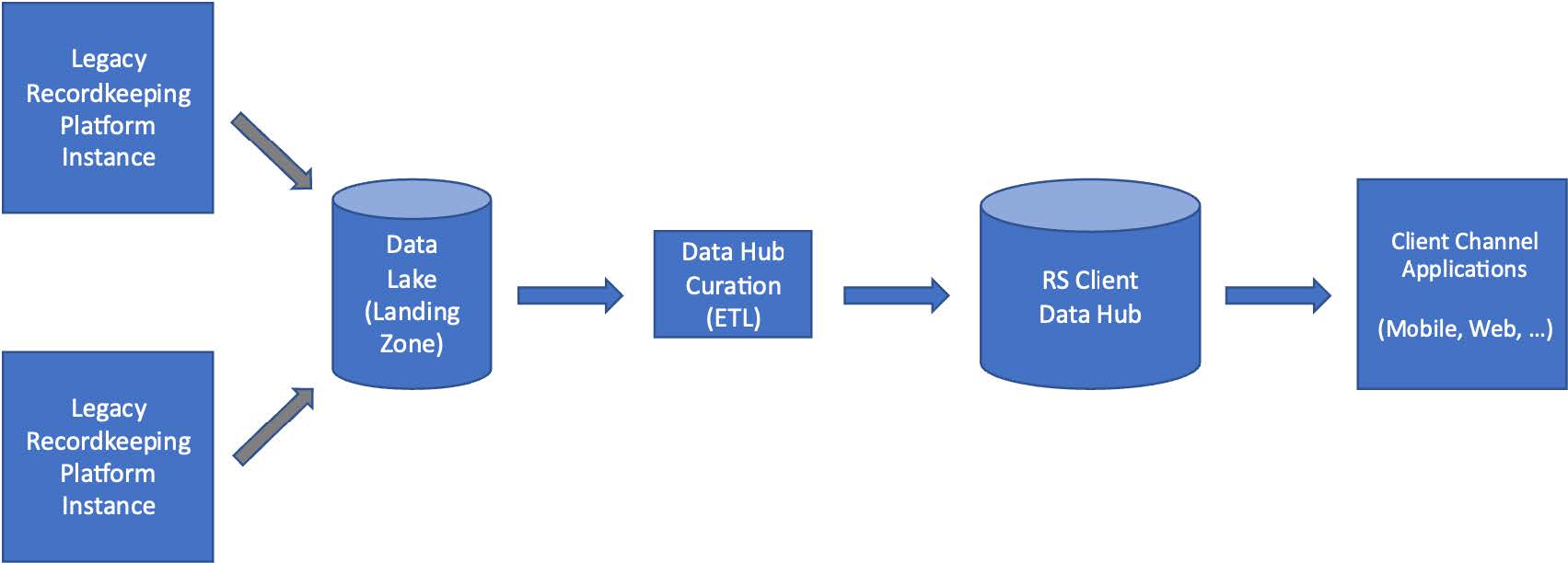BUSINESS PROBLEM
Major Financial Institution: Our client is a large financial institution providing retirement plans, individual life insurance, and other services for over 140 years.
Multiple Legacy Recordkeeping Systems: Our client operates multiple LOB-aligned legacy recordkeeping solutions (based on Omni) that are hosted on separate mainframe systems.
Data Availability was the primary obstacle to Experience Modernization: Efforts to modernize participant customer experiences were plagued by the legacy system skills, costs, and delays associated with the difficulties of extracting data from these legacy solutions and making data services available.
Strategy identified to create a Client Data Hub: The client imagined a Data Hub that would merge and curate data from legacy recordkeeping systems into a Hub that would facilitate modernized participant experiences and operational reporting.
Data Quality improvement opportunities: With systemic problems with data quality in the legacy systems, the client recognized that data curation would simultaneously and systematically support addressing the system of record data quality problems, particularly when it comes to duplicate customer identities and party-to-party relationship integrity.
OUR SOLUTION
Created Canonical Retirement Services Logical Data Model: We built a model unifying data from multiple Omni legacy recordkeeping system instances.
Recognized Enterprise Entities: Identified canonical entities (party, address, emails, etc.) that will serve multiple lines of business.
Physical Data Modeling readied: Generated vital logical model input and source analysis to a physical data model and services realizing a Client Data Hub that will intermediate data service needs.
Iterative Use Cases: Use cases defined for Participant Summary, Account Financial Activity, and Participant Loans.
Built ER Studio Data Architect Models: This included sub-models for RS Canonical Entities (Enterprise Entities), Core Retirement Services Entities, and RS (Activity) History entities.
Created Traceability Matrices: Trace from provided Web and Statement participant experiences to model elements.
Facilitated Data Governance: Traceability matrices provided a basis for tracking Data Governance Review.

RESULTS & CLIENT BENEFITS
Baseline Canonical Data Model for Retirement Services: The canonical logical model produced was the first business-validated, data governance-curated data model that the Retirement Services LOB had ever produced.
Modernization efforts eagerly consume the Canonical Model: Modernization efforts will consume this model and start parallel top-down and bottom-up tracks of Data Service Implementation, Source Data ETL, and Curation from the Legacy Systems to realize the Client Data Hub and the modernized data service it facilitates.
Data Glossaries and Business Services Achieve Vendor Neutrality: EI, together with the client’s data governance team, intentionally avoided employing Omni-specific terminology and replaced it with Business-meaningful vocabularies and taxonomies, removing the need for participant-facing developers and analysts to be SMEs in the legacy system jargon.
An Agile Approach is adopted for Implementation: EI’s Agile Data Modeling approach (Use Case based) allowed IT, Business, and Data Governance to iteratively identify the most useful data and ensure it was 100% in alignment with Business Processes and Rules.
Client Testimonial
“To my knowledge, this is the very first logical data model for a line of business ever created and this body of work should set us up for long-term success.”